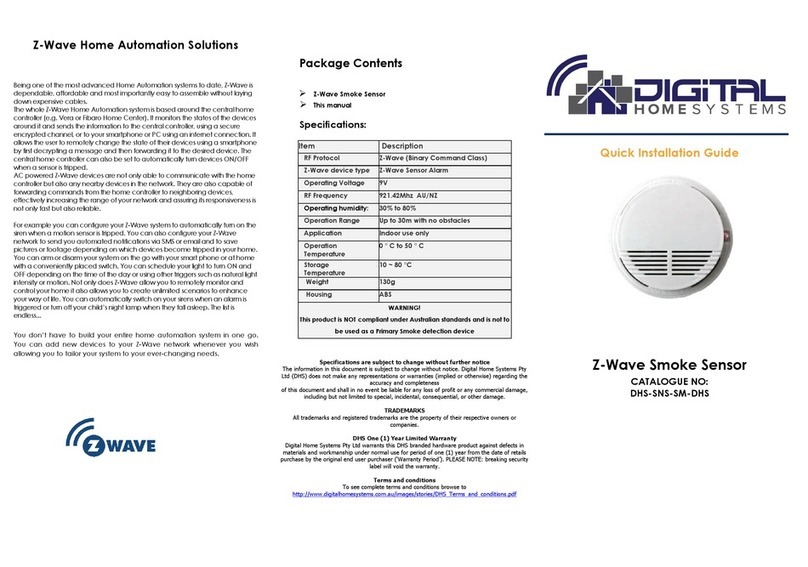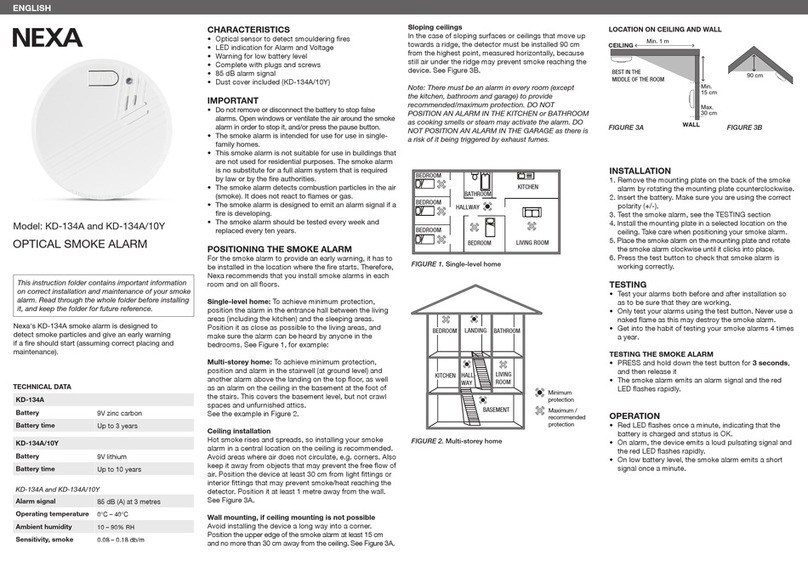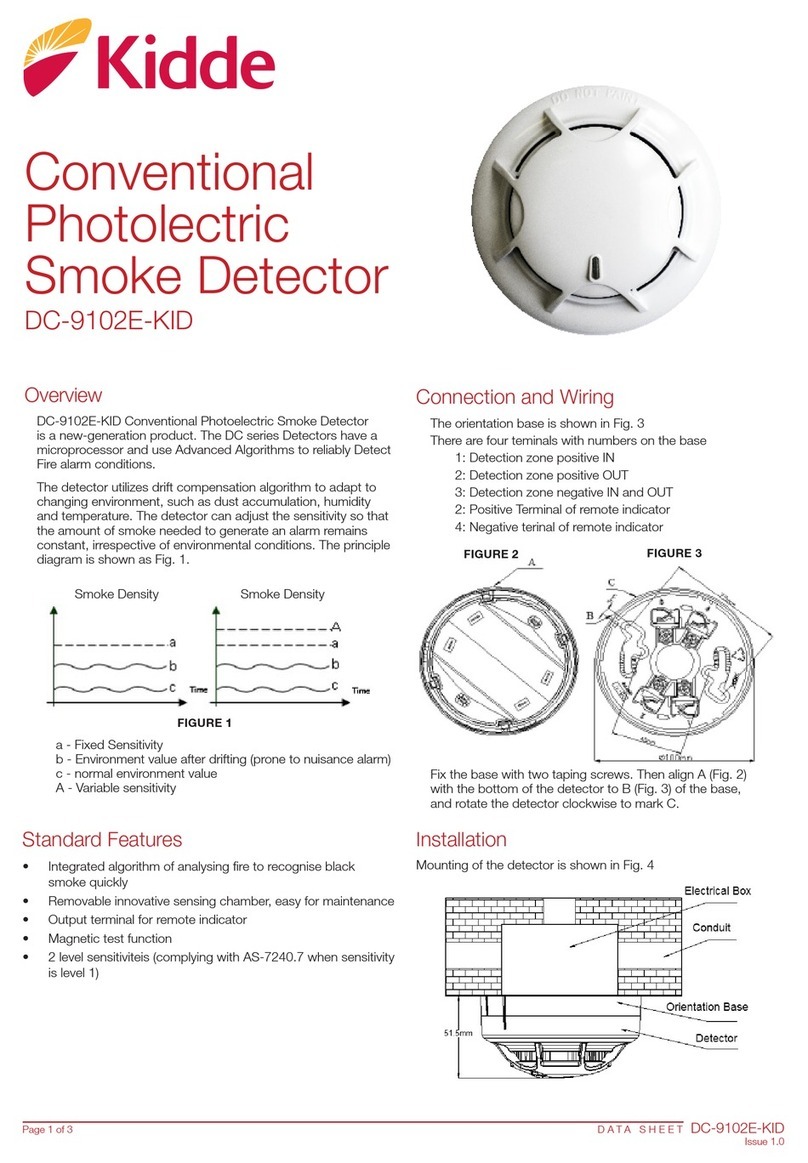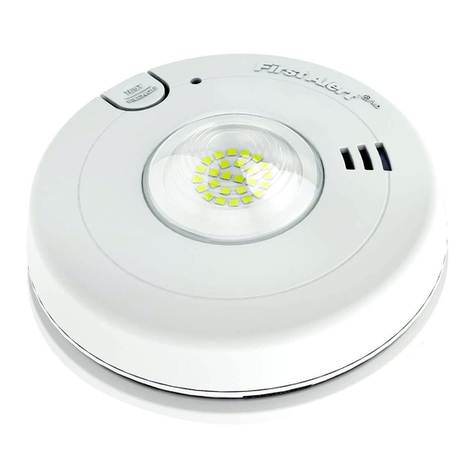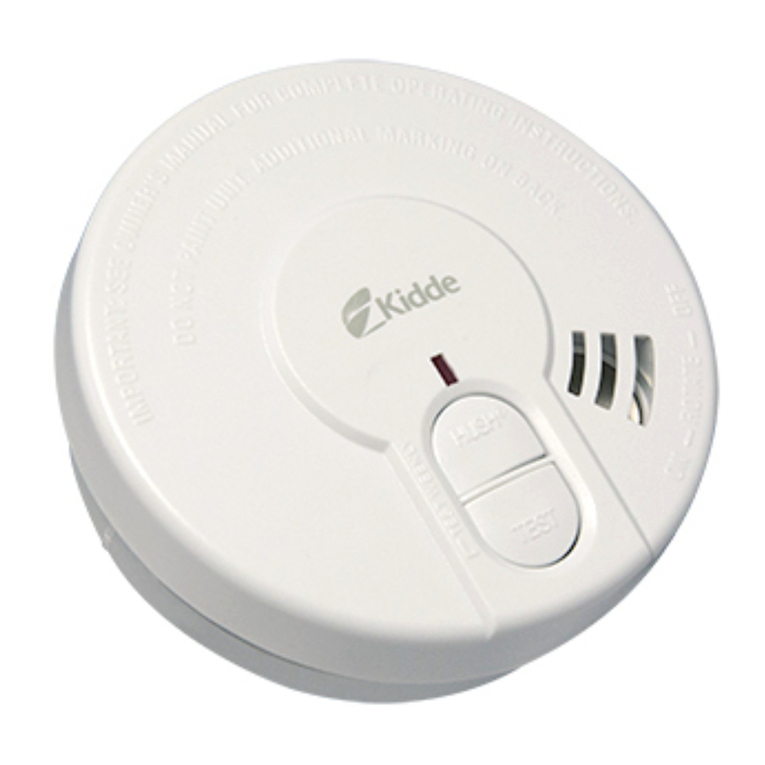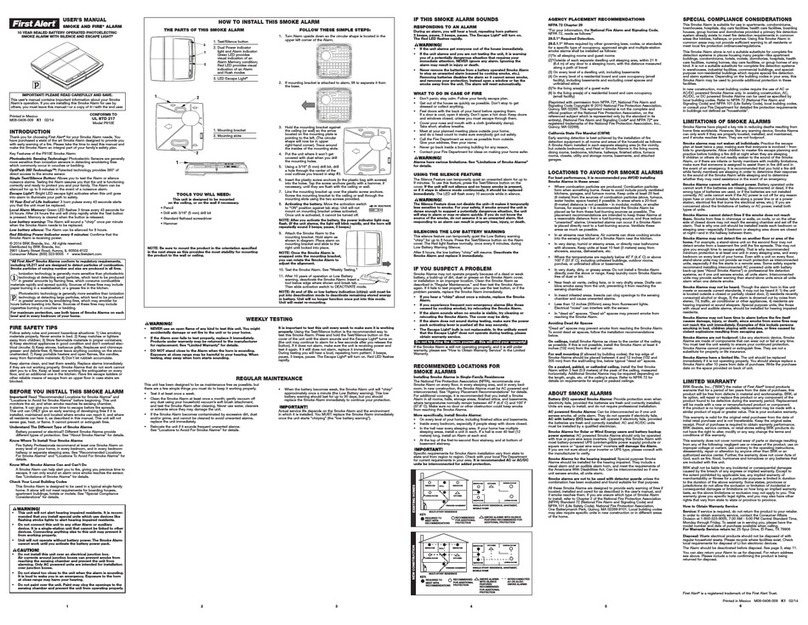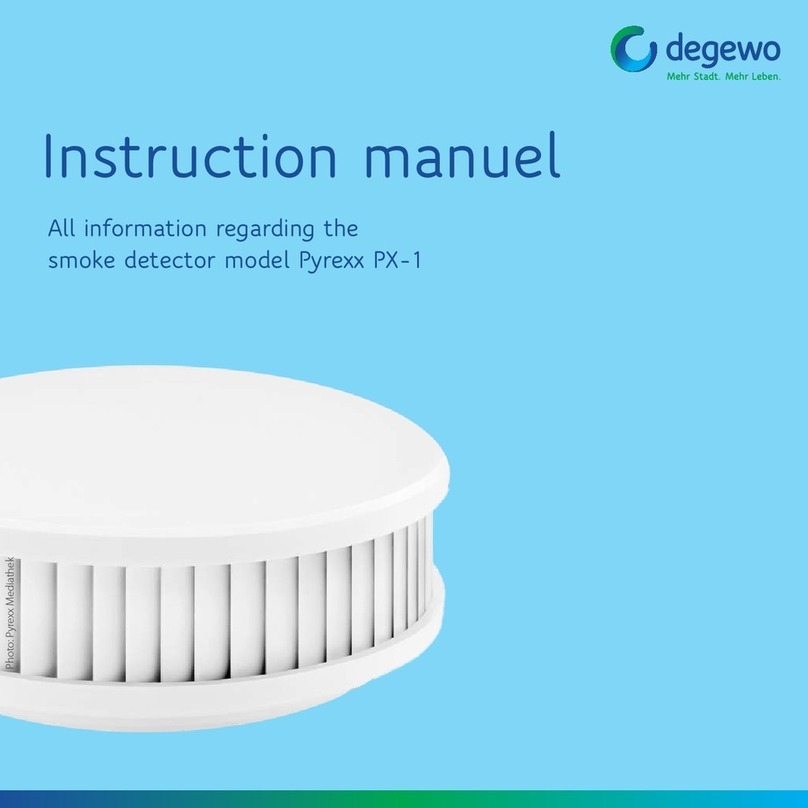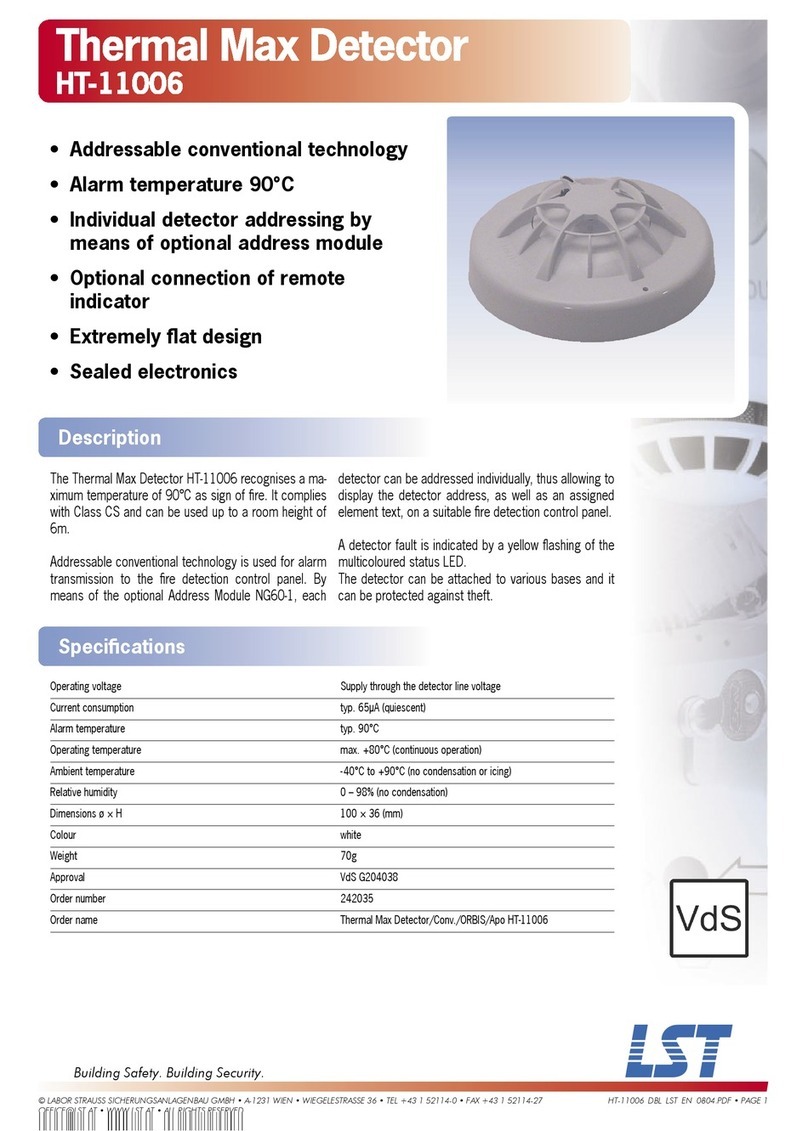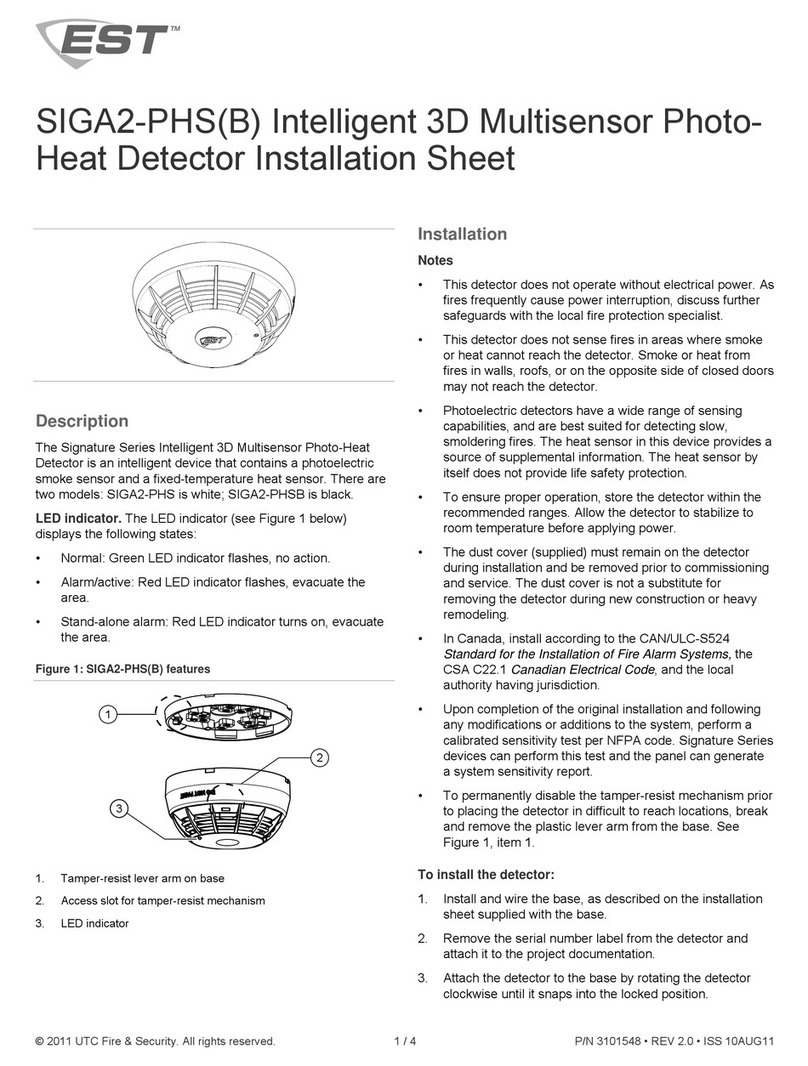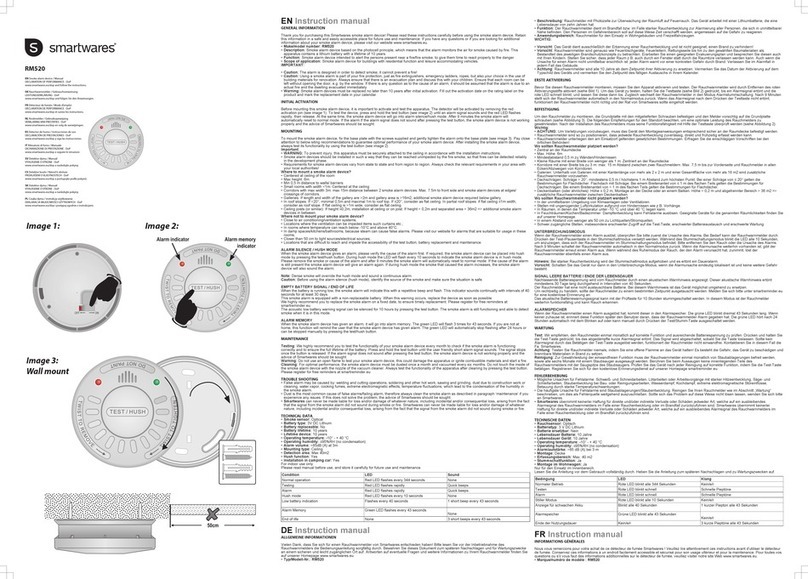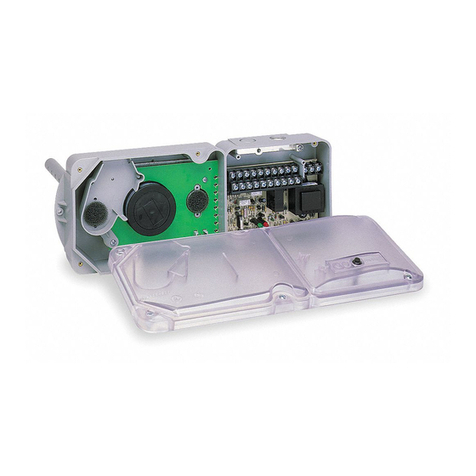Digital Home Systems DHS-SNS-SM-DHS User manual

Z-Wave Home Automation Solutions
Being one of the most advanced Home Automation systems to date, Z-Wave is
dependable, affordable and most importantly easy to assemble without laying
down expensive cables.
he whole Z-Wave Home Automation system is based around the central home
controller (e.g. Vera or Fibaro Home Center). It monitors the states of the devices
around it and sends the information to the central controller, using a secure
encrypted channel, or to your smartphone or PC using an internet connection. It
allows the user to remotely change the state of their devices using a smartphone
by first decrypting a message and then forwarding it to the desired device. he
central home controller can also be set to automatically turn devices ON/OFF
when a sensor is tripped.
AC powered Z-Wave devices are not only able to communicate with the home
controller but also any nearby devices in the network. hey are also capable of
forwarding commands from the home controller to neighboring devices,
effectively increasing the range of your network and assuring its responsiveness is
not only fast but also reliable.
For example you can configure your Z-Wave system to automatically turn on the
siren when a motion sensor is tripped. You can also configure your Z-Wave
network to send you automated notifications via SMS or email and to save
pictures or footage depending on which devices become tripped in your home.
You can arm or disarm your system on the go with your smart phone or at home
with a conveniently placed switch. You can schedule your light to turn ON and
OFF depending on the time of the day or using other triggers such as natural light
intensity or motion. Not only does Z-Wave allow you to remotely monitor and
control your home it also allows you to create unlimited scenarios to enhance
your way of life. You can automatically switch on your sirens when an alarm is
triggered or turn off your child’s night lamp when they fall asleep. he list is
endless...
You don’t have to build your entire home automation system in one go. You
can add new devices to your Z-Wave network whenever you wish allowing
you to tailor your system to your ever-changing needs.
Package Contents
Z-Wave Smoke Sensor
This manual
Specifications:
Item Description
F Protocol Z-Wave (Binary Command Class)
Z-Wave device type Z-Wave Sensor Alarm
Operating Voltage 9V
F Frequency 921.42Mhz AU/NZ
Operating humidity: 30% to 80%
Operation ange Up to 30m with no obstacles
Application Indoor use only
Operation
Temperature
0 ° C to 50 ° C
Storage
Temperature
10 ~ 80 °C
Weight 130g
Housing ABS
WA NING!
This product is NOT compliant under Australian standards and is not to
be used as a Primary Smoke detection device
Specifications are subject to change without further notice
The information in this document is subject to change without notice. Digital Home Systems Pty
Ltd (DHS) does not make any re resentations or warranties (im lied or otherwise) regarding the
accuracy and com leteness
of this document and shall in no event be liable for any loss of rofit or any commercial damage,
including but not limited to s ecial, incidental, consequential, or other damage.
TRADEMARKS
All trademarks and registered trademarks are the ro erty of their res ective owners or
com anies.
DHS One (1) ear Limited Warranty
Digital Home Systems Pty Ltd warrants this DHS branded hardware roduct against defects in
materials and workmanshi under normal use for eriod of one (1) year from the date of retails
urchase by the original end user urchaser (‘Warranty Period’). PLEASE NOTE: breaking security
label will void the warranty.
Terms and conditions
To see com lete terms and conditions browse to
htt ://www.digitalhomesystems.com.au/images/stories/DHS_Terms_and_conditions. df
Quick Installation Guide
Z-Wave Smoke Sensor
CATALOGUE NO:
DHS-SNS-SM-DHS

1 Installation
Mounting
Unlock the back bracket.
Use the designated holes on the back bracket to screw mount it in
desired location.
For optimal use, mount the Smoke Sensor on the ceiling.
Place one 9V battery into the Smoke Sensor.
Mount the Smoke Sensor onto the back bracket.
After a few seconds the Smoke Sensor is ready.
Inclusion/exclusion into a Z-Wave network
Network Wide Inclusion method (NWI)
1. When the Smoke Sensor is not yet included in a Z-Wave network, NWI
procedure will start automatically for 120 seconds after powering on the
Smoke Sensor (connecting a battery).
2. Make sure your Z-Wave controller is in the correct operating mode
(inclusion) just before the Smoke Sensor is powered and the inclusion
process will start automatically. Please check the status of inclusion on
your Z-Wave home controller.
Normal include or exclude method
1. Make sure your Z-Wave home controller is in the right operation mode
(include or exclude).
2. Press and hold the push button for 1 second and release to start the
inclusion or exclusion process (indication mode: Ready for learn mode).
Associations
You can add associated security devices to your Smoke Sensor. Press
and hold the push button for more than 5 seconds and release to test
whether the security devices associated with your Smoke Sensor work
properly.
2 Operation
Manual control
1. When you press the push button, the Smoke Sensor will beep and the
indicator light will blink immediately.
2. Release the push button to clear trigger status.
Smoke Trigger
1. When smoke is detected, the Smoke Sensor will beep and the indicator
light will blink.
2. he Smoke Sensor won't stop beeping unless smoke has disappeared or
the battery is removed for a short while (hardware reset).
Security system test within Z-Wave network
1. o test the sensor connection with your Z-Wave home controller (e.g.
VeraEdge) press and hold the push button for at least 5 seconds until the
indicator is continuously ON for about 1.5 sec.
2. Check if your Z-Wave home controller has seen that the device is
triggered.
3. o remove the triggered status, hold the push button for about half a
second (one or two beeps only).
4. Check if your Z-Wave home controller that the device is in un-triggered
status.
Indication modes
he indicator gives various statuses of the device as follows:
1. Automatically add: blinks 120 seconds.
2. Learn in progress (add): Indicator light blinks 1 time.
3. Learn in progress (remove): Indicator light blinks 1 second (8 times).
4. Learn mode success: Indicator light is on for 1 second.
5. Learn mode failed: Indicator light blinks fast.
Supporting Command Classes
Basic Device Class: BASIC_ YPE_ROU ING_SLAVE
Generic Device Class: GENERIC_ YPE_SENSOR_ALARM
Specific Device Class: SPECIFIC_ YPE_BASIC_ROU ING_SMOKE_SENSOR
Listening: RUE, Z-Wave Lib: 4.51
Command Classes: 71 85 80 72 30 86 84
Class: 0×71 COMMAND_CLASS_ALARM
Class: 0×85 COMMAND_CLASS_ASSOCIA ION
Class: 0×80 COMMAND_CLASS_BA ERY
Class: 0×72 COMMAND_CLASS_MANUFAC URER_SPECIFIC
Class: 0×30 COMMAND_CLASS_SENSOR_BINARY
Class: 0×86 COMMAND_CLASS_VERSION
Class: 0×84 COMMAND_CLASS_WAKE_UP
3 roubleshooting
NOTE: Before including the product to your Z-Wave network it is
advised to perform the exclusion procedure to reset network settings.
Frequently Asked Questions
Q: I can’t include my Z-Wave Smoke Sensor into my Z-Wave network,
what am I doing wrong?
A1. Check that your home controller is set to inclusion mode.
A2. he Z-Wave Smoke Sensor may already be included in a different
Z-Wave network. Perform the exclusion procedure and then attempt to
include the Z-Wave Smoke Sensor again.
Q: Why doesn’t the Z-Wave Smoke Sensor detect any smoke?
A1. he connection between your Z-Wave Smoke Sensor and home
controller may have been broken. Ensure that the smoke sensor is within
range of your home controller or a Z-Wave device capable of acting
as a repeater is added between the smoke sensor and your gateway,
then exclude and re-include the smoke sensor into your Z-Wave
network.
2. he battery is almost empty, try replacing it.
Q: Why does the push button on the Z-Wave Smoke Sensor not work?
A: Check that Z-Wave Smoke Sensor’s battery is new and properly
connected.
Q: Why does the indicator light not work?
A: Check that Z-Wave Smoke Sensor’s battery is new and properly
connected. he indicator light will not work if there is no power supplied
to the Z-Wave Smoke Sensor.
his device is using a radio signal that passes through walls, windows
and doors. he range can be influenced by local conditions such as
large metal objects, house wiring, concrete, furniture, refrigerators,
microwaves and similar items. On average, the indoor range is
approximately 12- 30 meters.
Do not expose this product to excessive heat or moisture.
Prevent long term exposure to direct sunlight.
Do not attempt to repair this product. If the product is damaged or if
you are in doubt about the proper operation, take the product back
to the place of purchase.
Do not clean the product with any liquid.
Do not paint.
Other Digital Home Systems Smoke Alarm manuals
